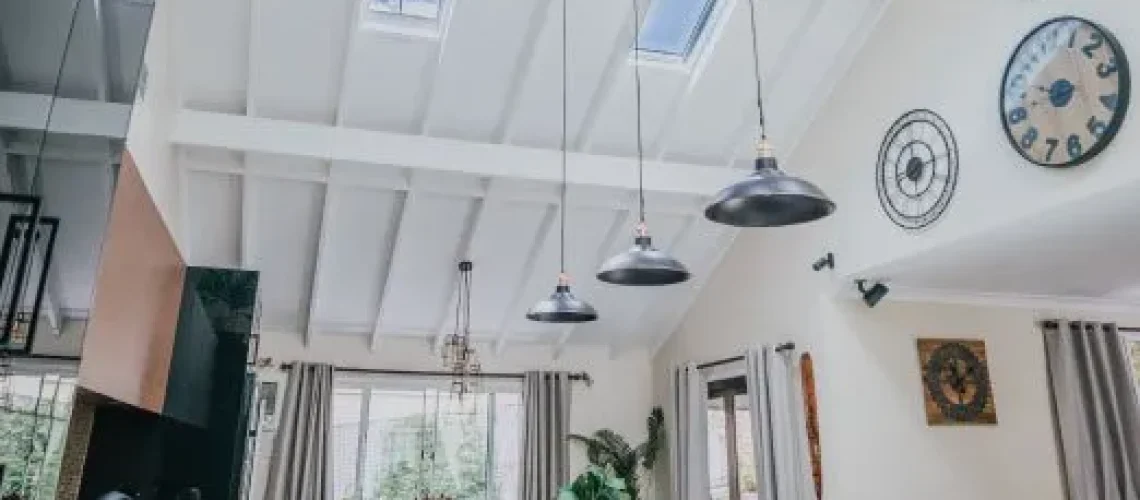It’s true that the right location can make all the difference when it comes to installing a skylight in your home.
Choosing the best spot for a skylight or roof window is essential to maximise its benefits and enhance the overall ambiance of your space. By considering factors such as room orientation, ventilation, roof structure, lighting needs, skylight size and shape, and the surrounding environment, you can make an informed decision that will truly brighten up your home.
There are many factors to consider, so in this article, we will walk you through the process of selecting the perfect skylight placement, the type of skylight, the installer and the options available from Velux, so let’s get started!
Consider the Room Orientation
When adding skylights to your home, consider the room’s orientation when choosing the best location for a skylight and roof windows in your home. The orientation of a room refers to the direction it faces, such as north, south, east, or west. This is important because it affects the amount of natural light that enters the room throughout the day though your beautiful Velux skylight. Bringing light into your home is an easy way to boost your mood and your family’s mood too!
For example, if your room faces south, it will receive direct sunlight for most of the day. In this case, you may want to place the new skylight on the north side of the roof to avoid excessive heat gain and glare. On the other hand, if your room faces north, it may not receive as much natural light. In this situation, the skylight can be installed on the south side of the roof, to help maximize the amount of light that enters the room.
Assess the Roof Structure
To accurately assess the roof structure, you should first evaluate its load-bearing capacity and determine the optimal placement for your skylight. Assessing the roof structure is crucial in ensuring the safety and stability of your skylight installation.
Start by consulting a professional to determine the load-bearing capacity of your roof. They’ll consider factors such as the roof’s material, slope, and age to determine if it can support the weight of a skylight.
Once you have determined the load-bearing capacity, you can then assess the best location for your skylight. Consider factors such as the room’s layout, natural light requirements, and the direction of sunlight.
Evaluate the Lighting Needs
Assess your lighting needs to determine the ideal placement for your skylight in your home. Before deciding on the location, it’s important to evaluate how much natural light you require in each room.
Consider the purpose of each space and the amount of sunlight it currently receives. Rooms that are used for activities that require good visibility, such as kitchens or home offices, may benefit from a skylight positioned directly above to maximize natural light during the day.
On the other hand, rooms that are used for relaxation, such as bedrooms or living rooms, may benefit from a skylight that provides a softer, more diffused light.
Determine the Size and Shape of the Skylight
To determine the size and shape of the skylight, you should take into account the dimensions and layout of the room. Consider the size of the room and how much natural light you want to let in. A larger skylight will bring in more light, but it may also create more heat and glare. If the room is small, a smaller skylight may be more appropriate.
Additionally, consider the shape of the skylight. A rectangular or square skylight is more common and easier to install, but a round or oval skylight can add a unique and aesthetic touch to the room.
Ultimately, the size and shape of the skylight should complement the room and meet your specific needs for natural lighting.
Take Into Account the Surrounding Environment
Consider the surroundings when you choose a skylight. Taking into account the surrounding environment is crucial to ensure that your skylight provides maximum benefits and enhances the overall aesthetics of your home.
First, evaluate the direction and position of the sun throughout the day. Placing the skylight on the south-facing side will allow for ample natural light and warmth during winter.
Next, consider any nearby trees or buildings that may obstruct the view or cast unwanted shadows on the skylight.
Additionally, think about the climate in your area. If you live in a region with heavy rainfall or snowfall, positioning the skylight on a slope will prevent water accumulation and potential leaks.
Conclusion
When choosing the best location for a skylight in your home, consider the following factors:
- Orientation of the room
- Assessment of the roof structure
- Evaluation of the lighting needs
- Determination of the size and shape of the skylight
- Taking into account the surrounding environment
By following these steps, you can ensure that your skylight is placed in the ideal position to maximize natural light and enhance the overall ambiance of your space.
Get in touch with The Skylight Shop Melbourne to discuss your needs, choose a skylight and chat about when you might like your new skylight installed!

